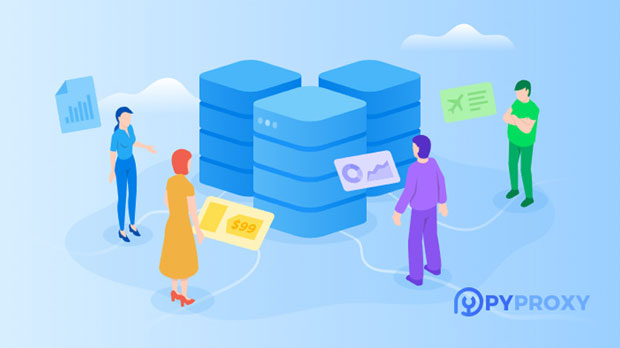In the digital world, security is paramount, and HTTPS encryption is an essential tool for safeguarding data transmission. Proxies, which are used to route traffic between a client and a server, are often required to support HTTPS in order to maintain privacy and security. However, not all proxies are created equal, and many users wonder whether all extra proxies—those used for specialized purposes such as bypassing geo-restrictions, improving privacy, or load balancing—support HTTPS encryption. Understanding the Basics of Proxy ServersA proxy server acts as an intermediary between a user's device and the internet, helping to mask the user’s IP address and potentially improve browsing speeds. It serves various functions, including filtering content, caching data, and accessing restricted regions. The way a proxy handles traffic can have significant implications for security, particularly when it comes to HTTPS encryption.There are several types of proxies, each with its own set of features:- Forward Proxy: Positioned between the client and the server, a forward proxy directs client requests to the server.- Reverse Proxy: Typically used by websites to protect internal servers and balance loads.- Transparent Proxy: A proxy that does not modify client requests and responses but simply redirects them.- Anonymous Proxy: Aimed at hiding the client’s IP address to protect privacy.All these proxies can, theoretically, support HTTPS encryption, but their functionality and security capabilities differ.How HTTPS Encryption Works in Proxy ServersHTTPS (Hypertext Transfer Protocol Secure) is the secure version of HTTP, using SSL/TLS protocols to encrypt data between the client and the server. This encryption prevents eavesdropping, man-in-the-middle attacks, and data tampering. When a client requests a secure connection, a handshake occurs between the client and the server to establish a secure session.In the context of proxies, HTTPS encryption can occur in two ways:1. End-to-End Encryption: The proxy server forwards the encrypted traffic without decrypting it. The client’s connection to the proxy is encrypted, and so is the proxy’s connection to the destination server. This ensures that no one in between can read the data.2. Decryption and Re-encryption: Some proxies decrypt the HTTPS traffic to inspect the content (e.g., for filtering purposes) and then re-encrypt it before forwarding it to the destination server. This process, known as SSL interception, can pose security risks if not implemented correctly.Do All Extra Proxies Support HTTPS?The answer to whether all extra proxies support HTTPS encryption is no. While many modern proxies support HTTPS, it is important to understand that not all proxies are configured to handle secure traffic by default. Several factors influence this:- Type of Proxy: Not all proxies are designed to handle encrypted traffic. For example, some older proxies or certain types of forward proxies may only support HTTP without encryption. More advanced proxies, such as reverse proxies or secure anonymous proxies, typically support HTTPS. - Proxy Configuration: Even if a proxy supports HTTPS, it must be properly configured to handle encrypted connections. Some proxies may not be set up to decrypt and inspect HTTPS traffic, which could be a limitation if a user is seeking to monitor or filter secure traffic. - Proxy Provider: Not all proxy service providers offer HTTPS-capable proxies. Some services might offer basic proxies that only support HTTP, while others provide premium, encrypted proxies. It’s essential to confirm the type of proxy before purchasing or using it.Why HTTPS Support Matters in Extra ProxiesFor users looking for enhanced security, ensuring that extra proxies support HTTPS encryption is crucial. Here are a few reasons why:1. Privacy Protection: Without HTTPS encryption, data transmitted between the client and the server is vulnerable to interception, which can lead to privacy breaches. HTTPS ensures that sensitive information, such as passwords and credit card details, remains secure. 2. Data Integrity: Without encryption, the data exchanged between the user and the server can be altered during transmission. HTTPS ensures that the data is not tampered with, maintaining its integrity.3. Trust and Reputation: Websites and online services increasingly require HTTPS connections to establish trust with users. Using an unencrypted proxy may prevent users from accessing these secure sites.4. Compliance and Regulations: In industries such as finance and healthcare, using HTTPS is a legal requirement to comply with regulations like GDPR or HIPAA. For businesses, it is critical to ensure that all proxies support HTTPS to meet these standards.Challenges in Proxy Support for HTTPSWhile HTTPS encryption is widely supported in many proxies, there are some challenges:1. SSL Inspection: Some organizations use proxies to inspect SSL/TLS traffic to protect against threats like malware or phishing. However, SSL interception (where the proxy decrypts and inspects HTTPS traffic) can introduce vulnerabilities if not implemented securely.2. Performance Overhead: HTTPS encryption and decryption processes introduce latency and performance overhead. Proxies that handle large volumes of secure traffic may experience slowdowns, especially if SSL certificates are not properly optimized.3. Compatibility Issues: Not all servers or websites are configured to work seamlessly with certain types of proxies, particularly when SSL interception is involved. This can lead to connection issues or errors when accessing certain websites.How to Ensure Your Extra Proxy Supports HTTPSIf you’re seeking a secure extra proxy, follow these steps to ensure that it supports HTTPS encryption:1. Verify Proxy Type: Confirm that the proxy you are using or considering is capable of handling encrypted traffic. This typically means using a reverse proxy, secure forward proxy, or a premium proxy service. 2. Check Configuration: Ensure that the proxy is configured to support HTTPS. If you’re using a proxy for security purposes, look for features such as SSL/TLS interception, certificate management, and encryption support.3. Choose a Reliable Provider: When selecting a proxy service, make sure it explicitly states HTTPS support. A good provider will also offer encryption standards, such as SSL 2048-bit encryption, which adds an additional layer of security.4. Test the Proxy: Perform tests to verify that the proxy maintains encrypted connections to both the client and server. Tools like SSL Labs can help evaluate the security of the proxy and ensure that it adheres to the latest encryption standards.ConclusionNot all extra proxies support HTTPS encryption, and it’s important to choose one that does if privacy and security are a priority. The type of proxy, its configuration, and the service provider all play crucial roles in determining whether HTTPS support is available. By understanding how HTTPS works within proxies and knowing how to ensure proper encryption, users can protect their data and enjoy a secure online experience. Whether you’re looking for privacy, secure access, or compliance with regulatory standards, selecting a proxy that supports HTTPS encryption is essential.
Jun 26, 2025



































































